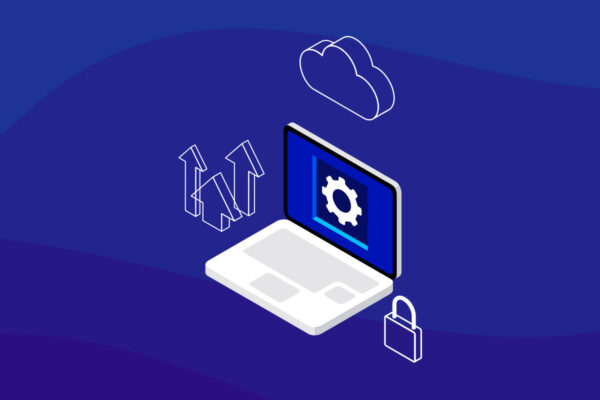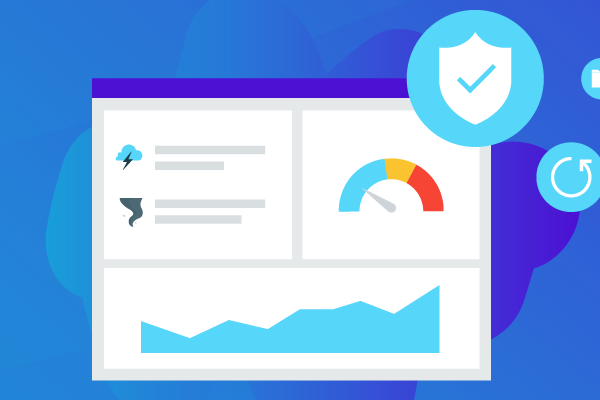What Is Containers-as-a-Service? CaaS Explained
For managed service providers (MSPs) working with customers that value the benefits of cloud-native development, containers are key. A container is a lightweight software package that enables an IT infrastructure environment to run applications. Containerization enables developers to build more portable application components for cloud infrastructure. Containers can save developers time and money, especially when they’re managed as-a-service.
Containers-as-a-Service (CaaS) is a cloud service that uses container-based virtualization to upload, organize, run, scale and manage containers. CaaS continues to grow in importance because of the rise of technologies like container technology, microservices-based architecture and cloud computing.
How does a container work?
Containers are similar to virtual machines (VMs), although they have key differences. Instead of virtualizing the underlying hardware, containers virtualize an operating system (think Linux, Windows) containing only the application and its dependencies. A container is a more agile way to virtualize applications that can run from almost anywhere and it possesses all the required dependencies (code, configuration, runtime and system libraries) to run on a host system.
Containers also have their own isolated segment of operating resources, which are helpful for efficiently scaling DevOps across codebases.They work consistently on any machine that uses the container, which decreases the time and resources that are necessary for deployment management.
What is CaaS and how does it work?
Think of CaaS as automated hosting and deployment of containerized software packages. DevOps teams usually need to deploy, manage and monitor the infrastructure on which containers operate.
CaaS is a subscription-based cloud service that uses container-based virtualization (web portals). It offers users an orchestration platform for developing containerized applications and runs and maintains the infrastructure between containers. The service streamlines the development and management of containers, applications and clusters in a software-defined infrastructure used on-site or in cloud environments.
CaaS can help support a multi-cloud strategy, optimize operating costs and reduce operating costs.
What is CaaS vs. IaaS vs. PaaS?
CaaS is a subset of Infrastructure-as-a-Service (IaaS). As-a-service models depend on IaaS, which is the foundation of cloud computing and includes servers, storage, virtual machines (VMs) and networks.
IaaS allows developers to request access to a cloud computing instance via their hosting provider. With remote access and configuration, custom software can be installed.
Platform-as-a-service (PaaS) pertains to code stack-level infrastructure. This is the back-end of development. Projects using PaaS don’t have an underlying operating system. Instead, the model allows users to develop, manage and run their own applications. PaaS is better for single application deployments because it focuses on a single stack per deployment.
Conversely, CaaS is better for microservices. Each container in CaaS can have its own operating system and language stack with the main goal being to ensure consistent behavior across user environments.
Why is CaaS important?
Before CaaS, software development included infrastructure governance as a part of the bring-to-market process. DevOps teams needed to maintain the underlying infrastructure containers ran on.
With CaaS, these teams save time. They don’t have to focus on building and testing container infrastructure. Even better, DevOps teams can develop creative solutions to fit customers’ needs.
The automation of IT functions and improved portability of containers help to reduce the entire development lifecycle and the time between deployment.
This is done without increasing risk so DevOps teams can offer new features in a shorter amount of time. Containers have become a staple of DevOps because of their efficiency, scalability and the improved security that containerized apps can deliver.
CaaS examples
The public cloud providers listed below offer some level of CaaS.
Amazon Web Services (AWS)
Google
IBM
Joyent
Rackspace
AWS has its Amazon EC2 Container Service (ECS), Google has its Container Engine service and Microsoft has Azure Containers.
The difference between CaaS providers is the orchestration platform. The platform handles crucial tasks like container deployment, cluster management, scaling, reporting and lifecycle management.
Benefits of Containers-as-a-Service
CaaS comes with significant benefits for DevOps teams.
Time and money savings. The automation of infrastructure management allows teams to spend time working on more complex solutions. And, with CaaS, like other as-a-Service products, businesses only pay for what they need.
Efficiency. Containers require fewer resources than VMs. You can run several containers on one server and they require less bare-metal software helping to lower costs.
Scalability. Containers can scale horizontally. Users can multiply identical containers within the same cluster to expand them when necessary. Using and running what you need, when you need it, further reduces operating costs.
Security. Because containers are isolated from each other, if one is compromised, the others won’t be. This helps to strengthen your cybersecurity posture.
Portability. Since containers have everything they need to operate, you can deploy them in several environments. This includes private and public clouds. With portability comes flexibility allowing you to easily move workloads between environments and providers.
Autonomy. Containers can start and stop in seconds due to their autonomy from the operating system. As a result, both operational and development speeds increase.
Streamlines the development process. Developers can modify containers at scale removing inconsistencies. This helps create a better user experience for both the DevOps team and customers.
Learn how you can use Datto for containerization with the Datto Linux Agent.




